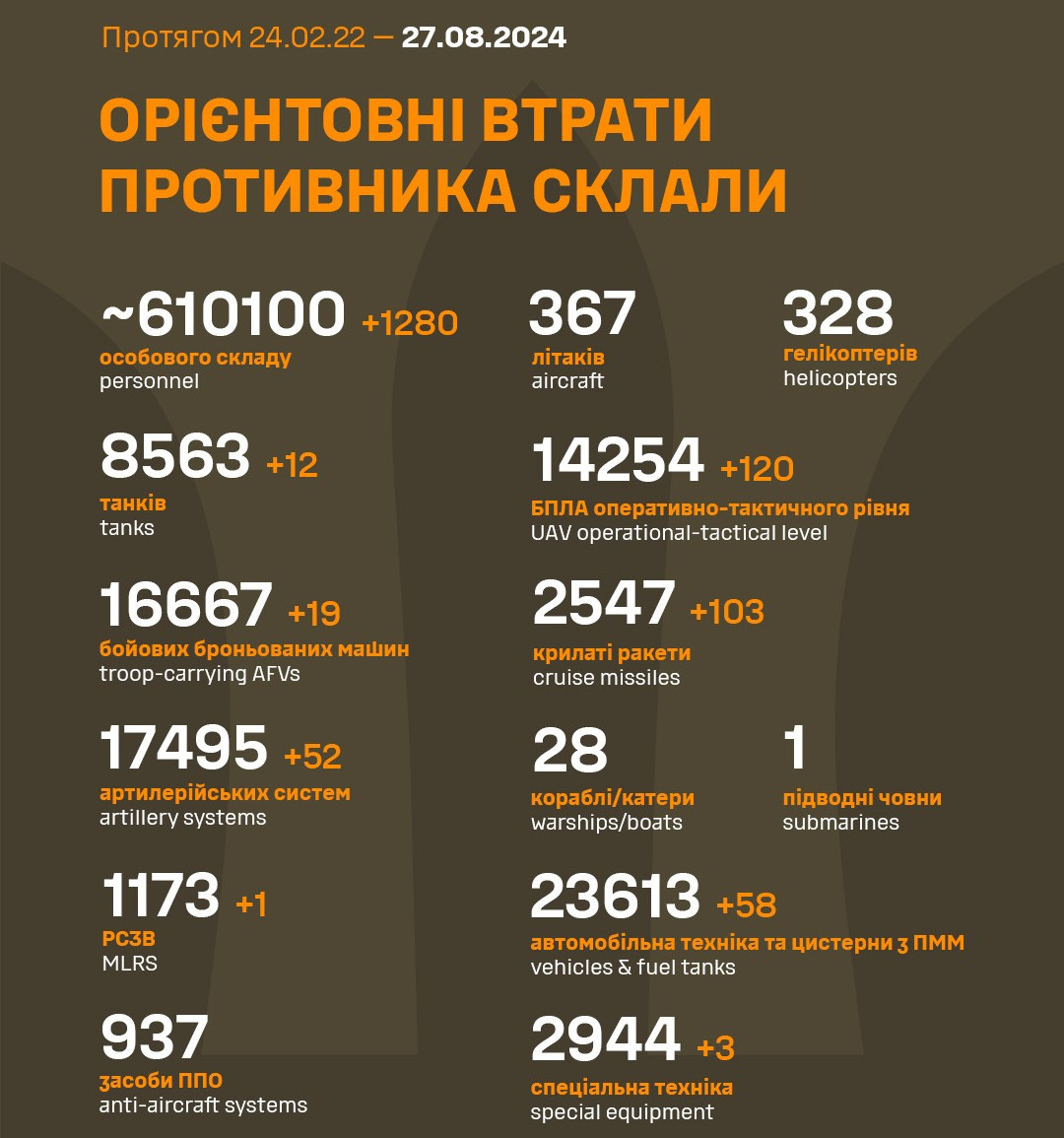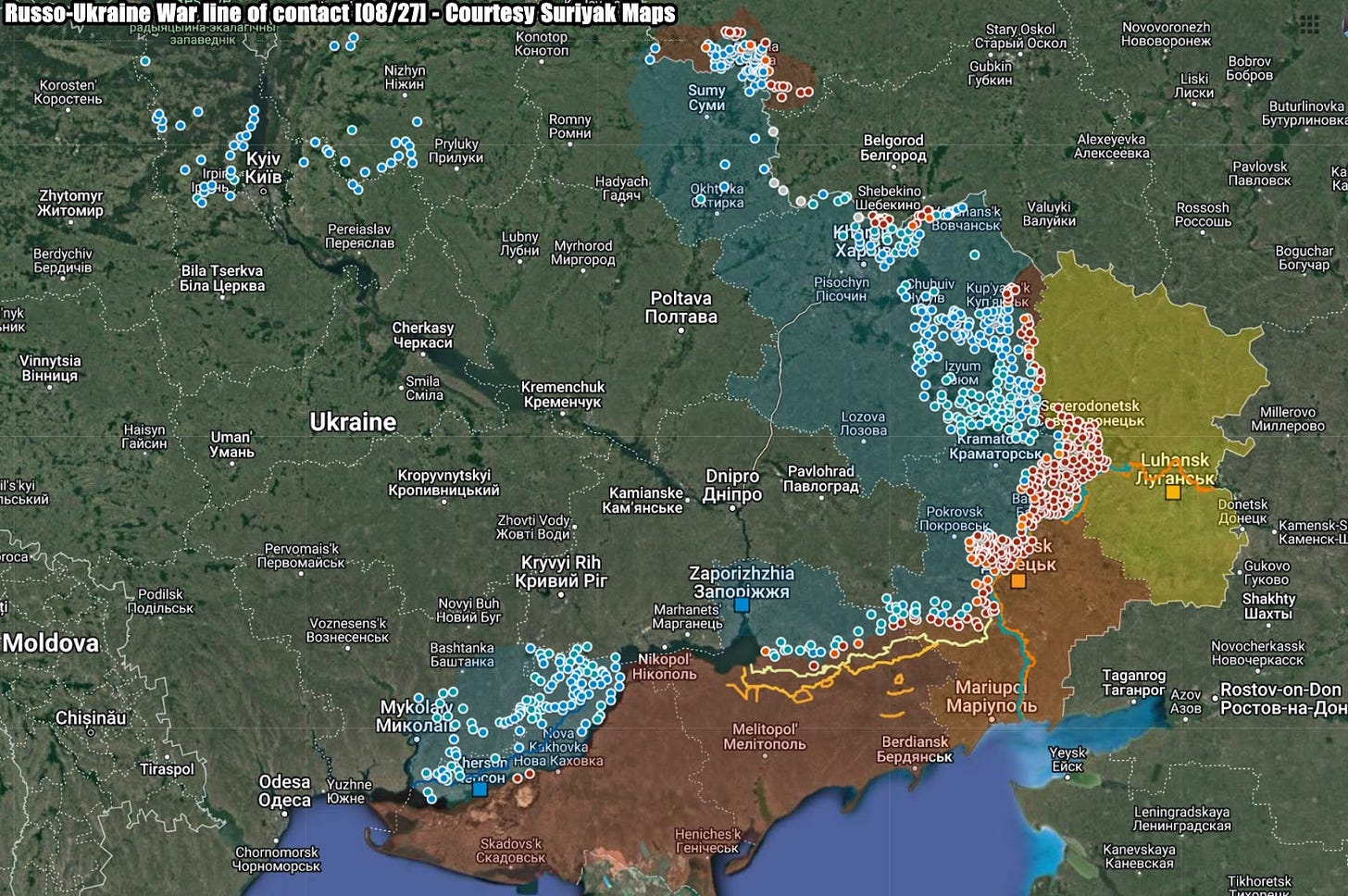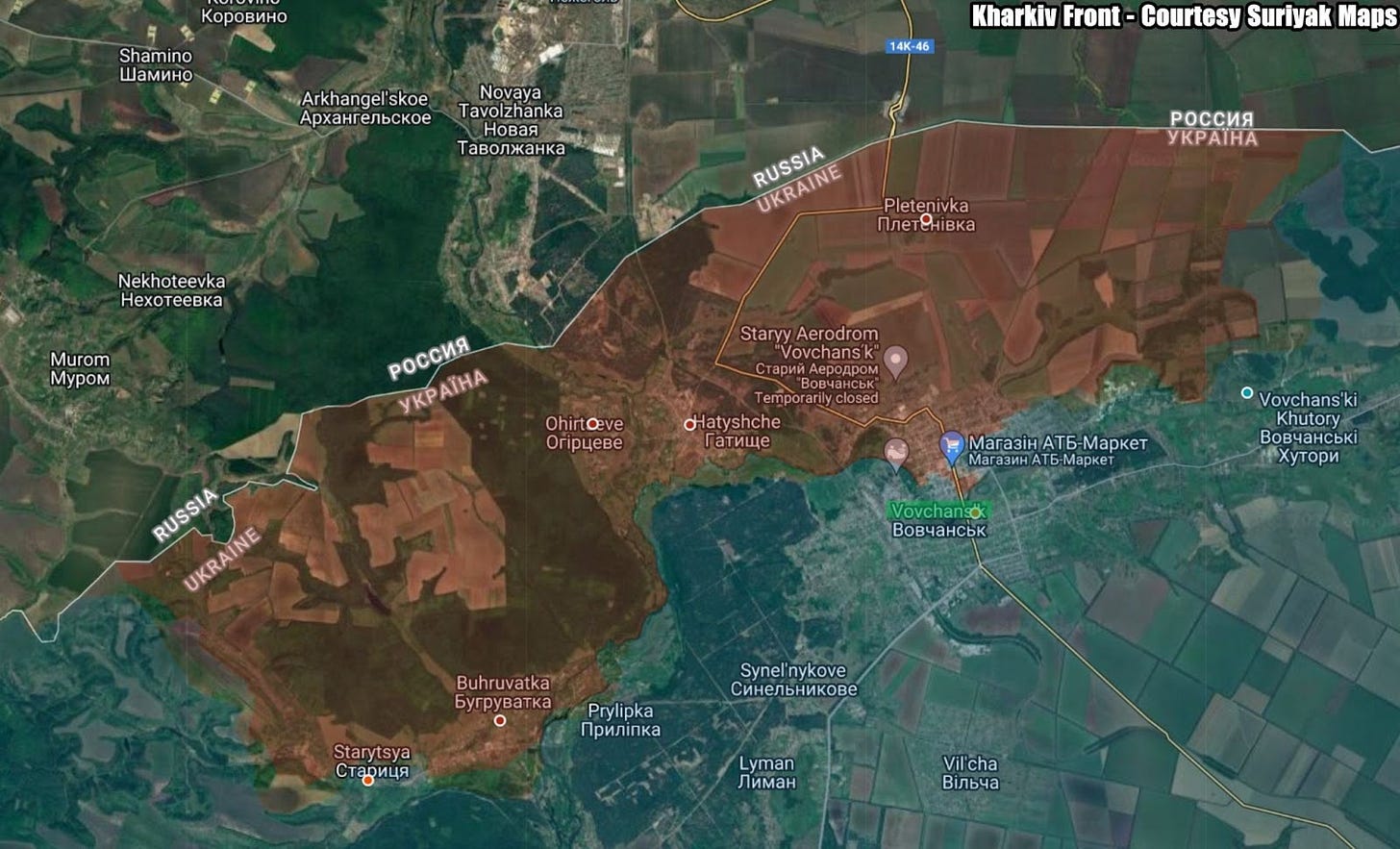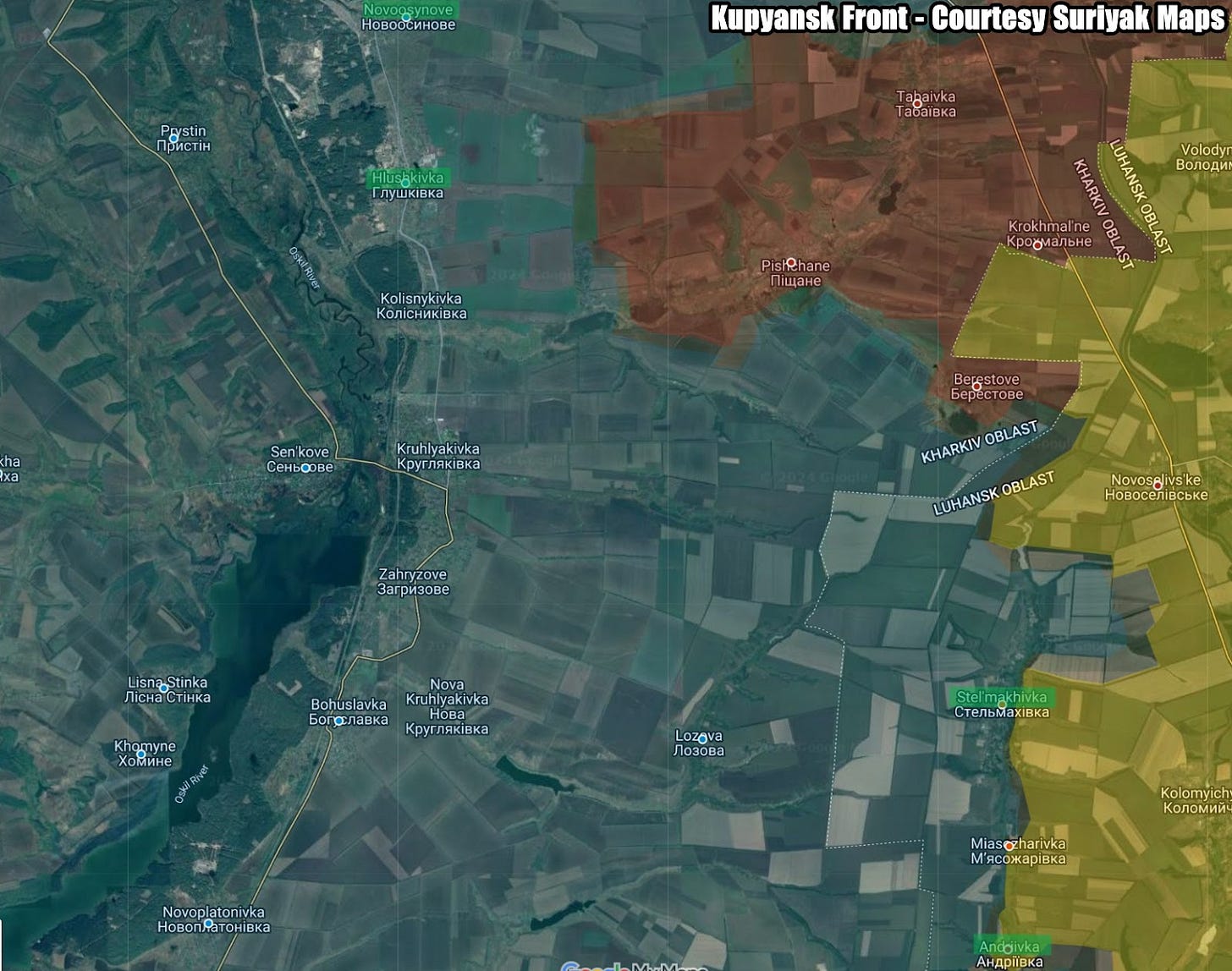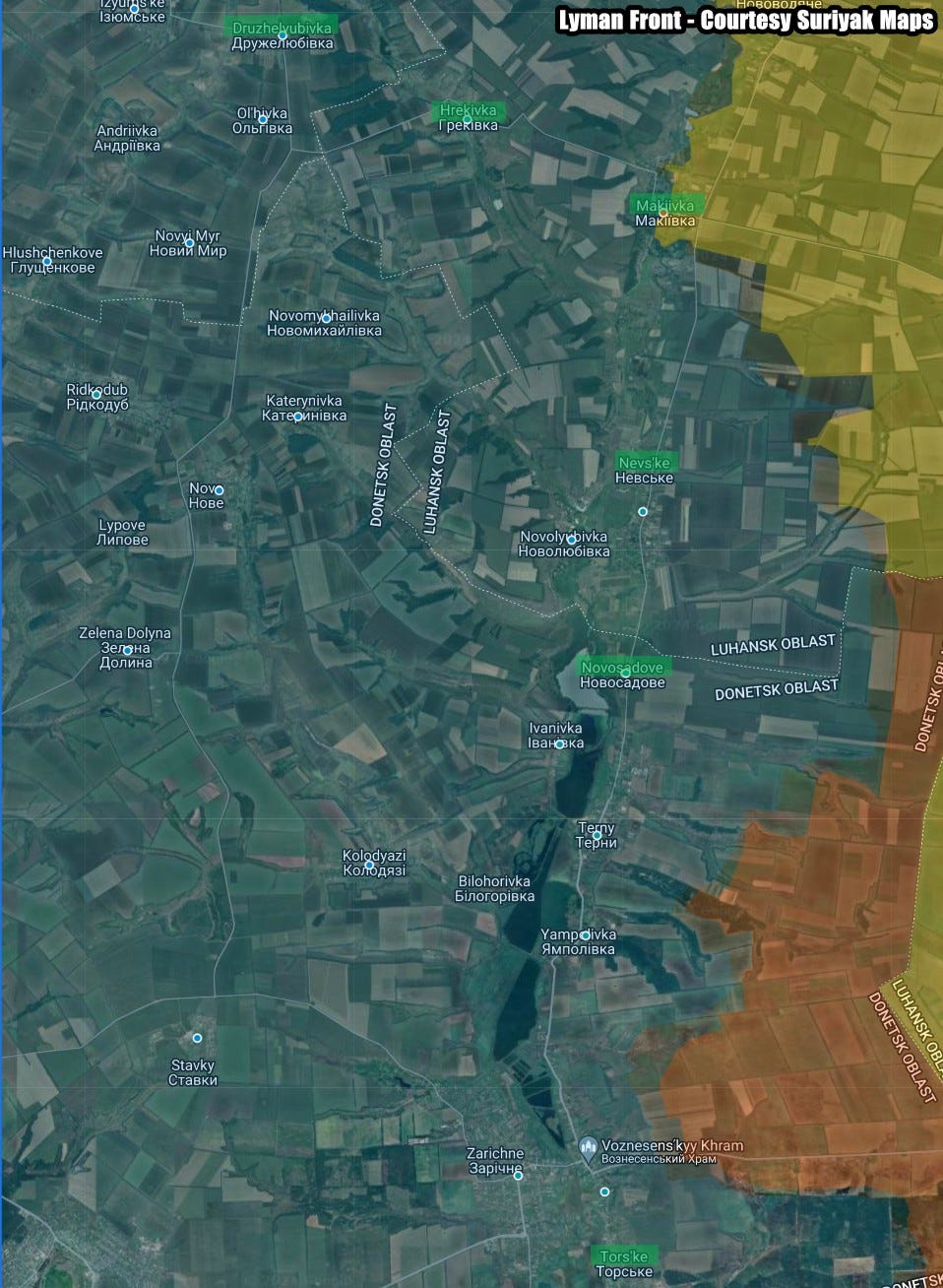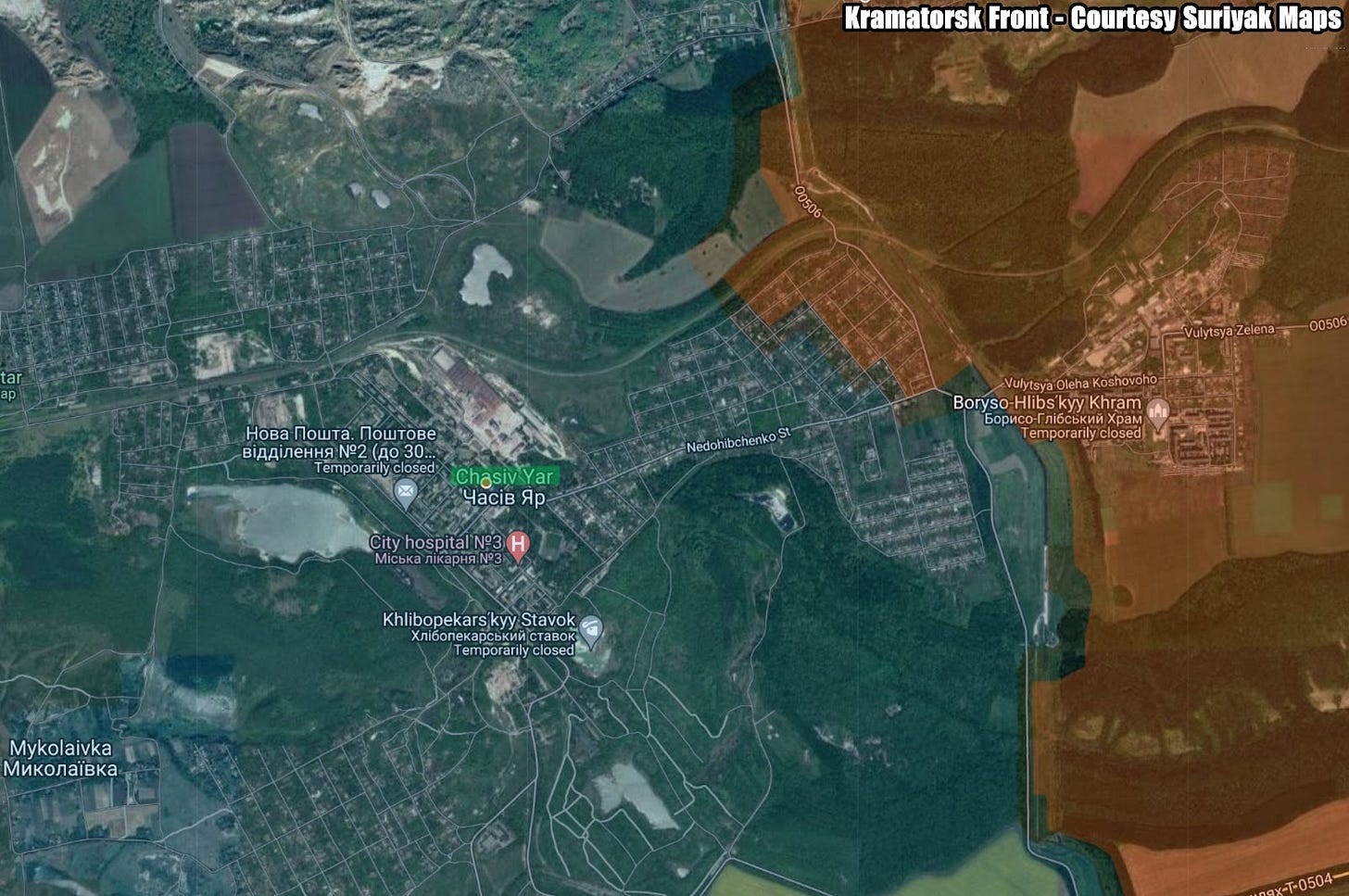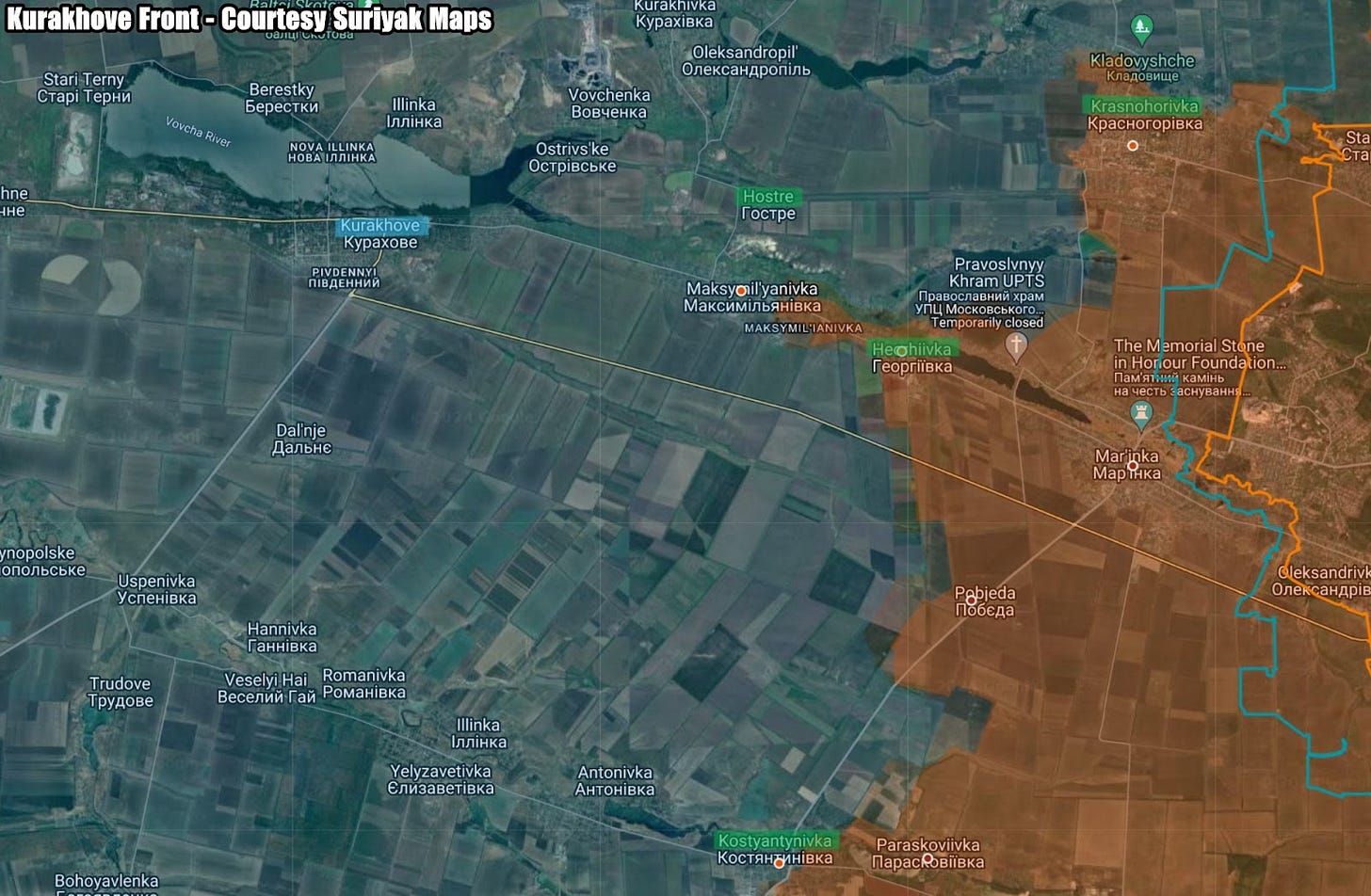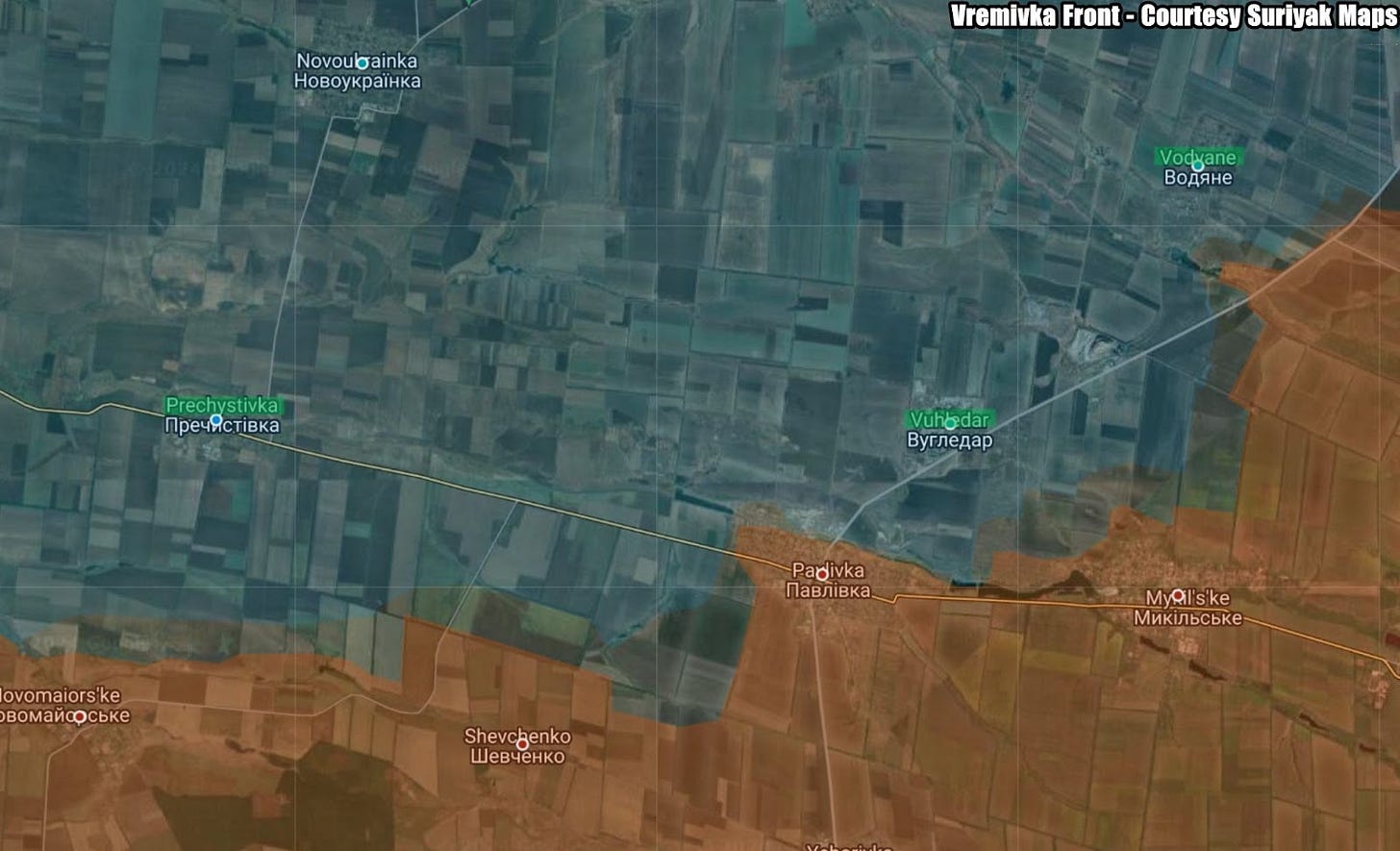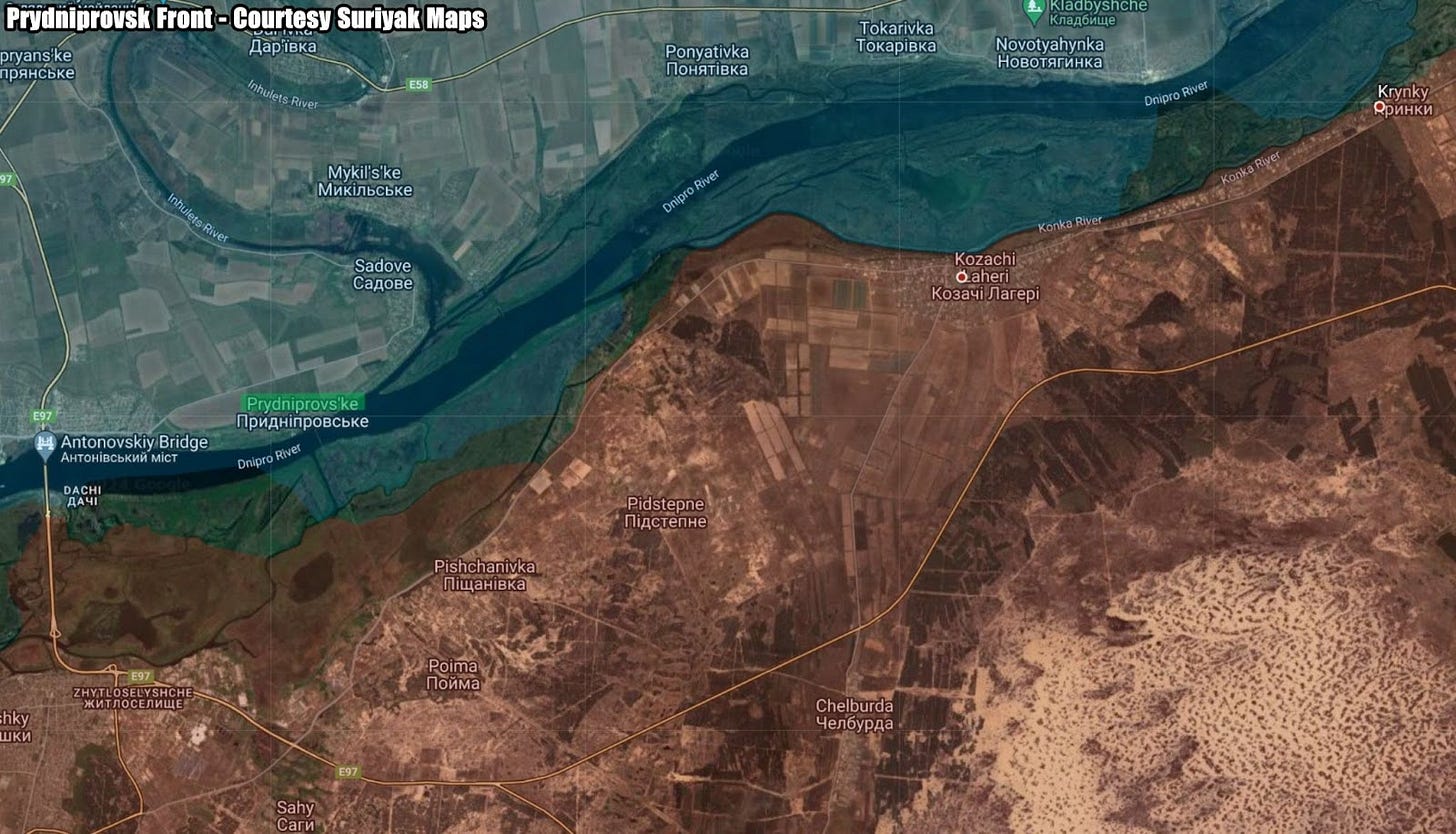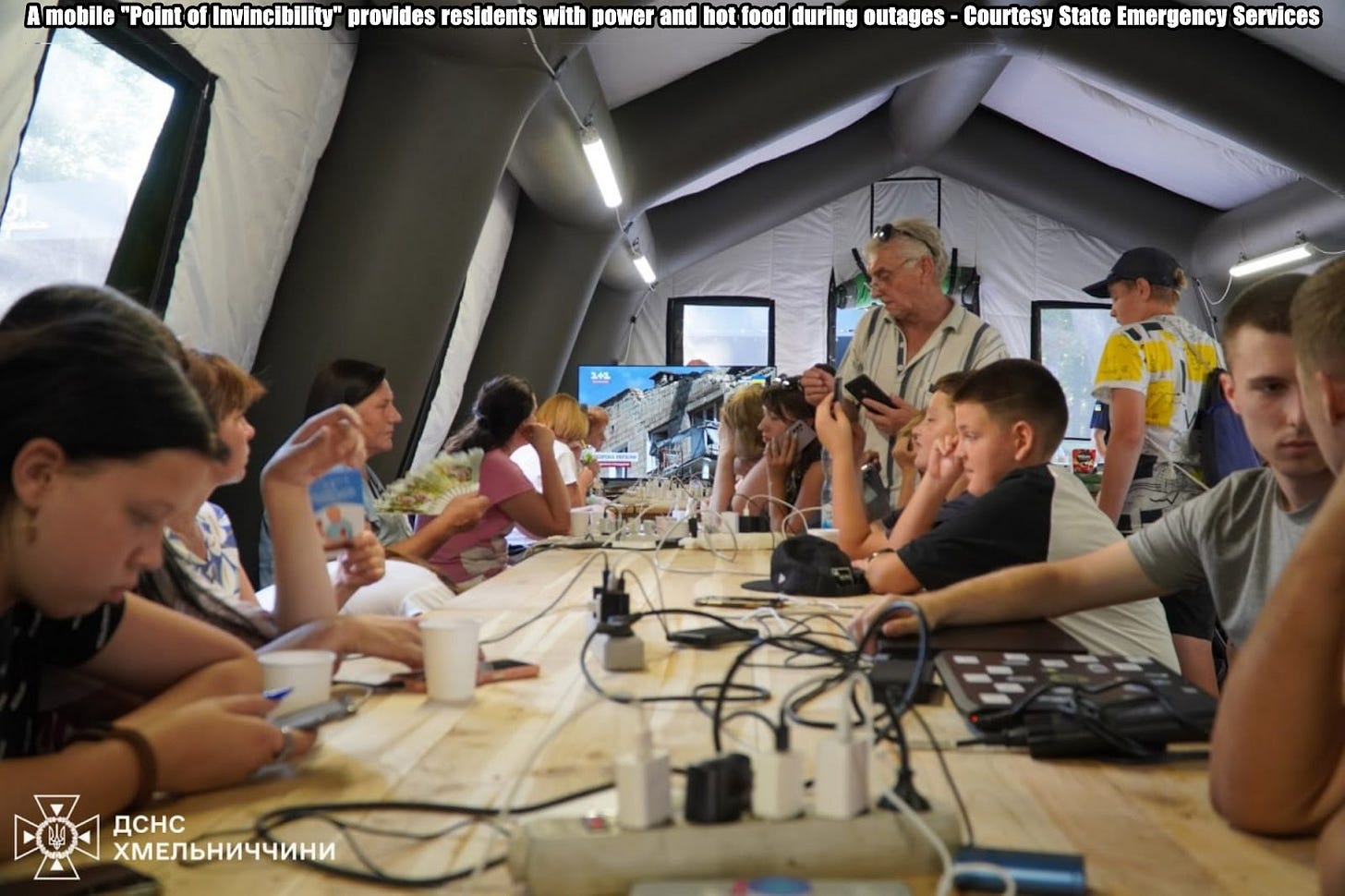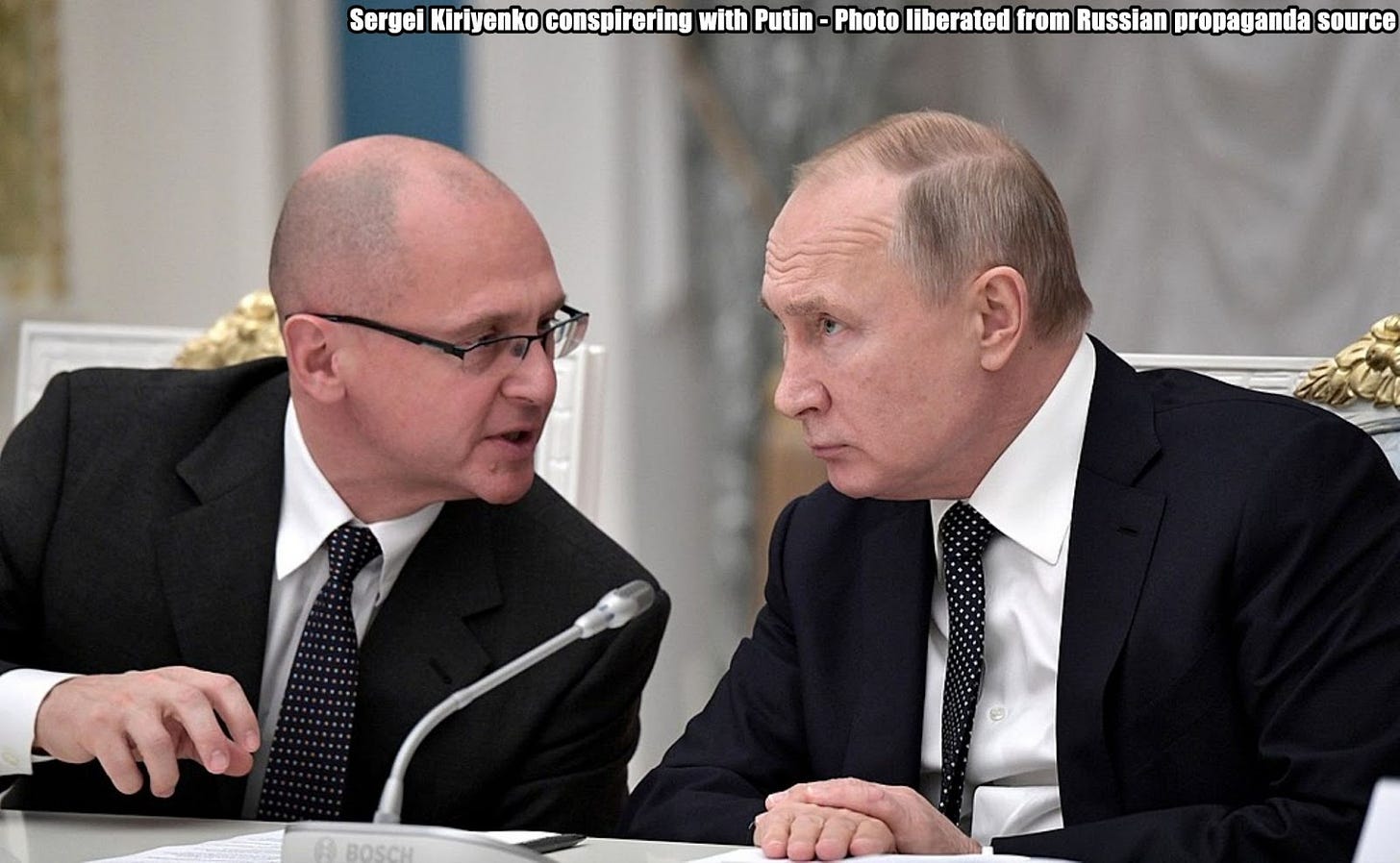Slava Ukraini! In early 2022 I began a Telegram channel aggregating news from a number of sources daily on the war in Ukraine. In June 2023 I began providing a daily draft for the Ukraine War Brief Podcast collecting news from over 70 sources daily, much of which formed the basis of the script. While the Podcast no longer exists I have continued to make this Brief available both on my own Substack and The People’s Media for those who wish to keep up with events on a daily basis.
All the latest news on the Russo-Ukraine War 6 days per week
ALONG THE CONTACT LINE
GSAFU Morning Report
The General Staff of the Armed Forces of Ukraine in its Operational Information update at 22:00 on Aug 26 stated that day 915 of the full-scale invasion of the Russian Federation against Ukraine was about to begin.
During the past day, 148 combat engagements took place. Over the past 24 hours, the enemy carried out 1 missile strike, 59 air strikes, 649 drone strikes and more than 3,200 artillery strikes across the positions of Ukrainian forces.
At the same time, Ukrainian soldiers continue to inflict losses in manpower and equipment on the occupying troops, exhausting the enemy along the entire front line and continue to disrupt the plans of Russian occupiers to advance deep into the territory of Ukraine.
Russia redeploys 30,000 troops to Kursk
One of the objectives of Ukraine's Kursk Oblast operation was to divert a significant number of Russian forces from other sectors, primarily from the Pokrovsk and Kurakhove sectors in Donetsk Oblast, Commander-in-Chief Oleksandr Syrskyi said on Aug. 27. The Kyiv Independent reported.
As Kyiv's incursion into Kursk Oblast enters its fourth week, Ukraine is in control of 1,294 square kilometers and 100 settlements, including the town of Sudzha, Syrskyi said. A total of 594 Russian soldiers have been captured, according to the general.
Speaking at the "Ukraine 2024. Independence" forum in Kyiv, Syrskyi said that Moscow has redeployed about 30,000 of its troops from other sectors to the Kursk direction, "and this number is growing." At the same time, Russia deployed its most combat-ready units in the Pokrovsk sector.
"The enemy is trying to withdraw units from other directions, and on the contrary, it is increasing its efforts in Pokrovsk sectors," Syrskyi said.
According to the general, Russia has reduced its activity in Ukraine's south, but continues to advance in Zaporizhzhia Oblast, trying to regain positions near the village of Robotyne. In partially occupied Kherson Oblast, Moscow's forces are trying to regain control of an island zone near the Dnipro River's delta.
Air Force Daily Report
On the night of August 27, 2024, radio engineering troops of the Air Force detected and escorted 91 means of air attack of the enemy.
This night, the occupiers struck Ukraine with missiles of various types and attack UAVs:
- 3 Kh-47M2 "Kinzhal" aeroballistic missiles (from MiG-31K aircraft from the airspace of the Lipetsk region - Russian Federation);
- ballistic missile "Iskander-M" (from Crimea);
- cruise missile "Iskander-K" (from the Voronezh region - Russian Federation);
- 5 Kh-101 cruise missiles (from Tu-95MS bombers from the airspace of the Volgograd region - Russian Federation);
- 81 shock unmanned aerial vehicles of the "Shahed" type (from Yeysk and Kursk regions - Russian Federation).
As of 9:00 a.m., as a result of combat operations, anti-aircraft defense shot down:
- 5 Kh-101 cruise missiles;
- 60 attack UAVs of the "Shahed-131/136" type
Ten enemy drones have been downed (presumably crashed) on the territory of Ukraine, one has crossed the border with Belarus, and about ten more are in the airspace of Ukraine.
❗️Combat work continues!
Aviation, anti-aircraft missile units, electronic warfare equipment and mobile fire groups of the Defense Forces of Ukraine were involved in repelling the enemy's air attack.
Combat work was carried out in most regions of the country: in Kyiv, Khmelnytskyi, Rivne, Vinnytsia, Cherkasy, Kherson, Mykolaiv, Zaporizhzhya, Khmelnytskyi, Kharkiv, Dnipropetrovsk, Poltava, Zhytomyr, Sumy, Chernihiv and Kirovohrad regions.
The Russian Border Incursion
Ukrainian forces continue offensive operations within Kursk Salient
The Institute for the Study of War (ISW), a US based think tank, in its Aug 26 Russian Offensive Campaign Assessment assessed that Ukrainian forces continued offensive operations within their salient in Kursk Oblast on August 26, but neither Russian nor Ukrainian forces made any significant confirmed or claimed advances. The Russian Ministry of Defense (MoD) and other Russian sources claimed that Russian forces repelled Ukrainian attacks near Komarovka (southwest of Korenevo).
Several Russian sources claimed on August 26 that fighting is ongoing in Olgovka and Kremyanoye (both east of Korenevo) despite claims on August 25 that Russian forces had recaptured these settlements.
Several Russian milbloggers claimed that fighting is ongoing near Malaya Loknya (north of Sudzha), although one Russian source claimed that Ukrainian forces are advancing in the area.
Geolocated footage published on August 26 shows Ukrainian forces operating just west of Nechayev (northeast of Sudzha), and Russian claims of fighting near the settlement also indicate that Ukrainian forces continue operating near Nechayev.
Geolocated footage published on August 25 shows Ukrainian forces operating in Borki (southeast of Sudzha), and Russian sources claimed on August 26 that fighting is ongoing near the settlement.
Elements of the Russian 810th Naval Infantry Brigade (Pacific Fleet, Eastern Military District [EMD]) and 11th Airborne (VDV) Brigade are reportedly counterattacking in the Plekhovo-Borki-Spalnoye area (south to southeast of Sudzha).
The Khortytsia operational-strategic group
(Responsible for the northeastern part of Ukraine. )
Kharkiv axis: There were several Russian attacks over the last day near Vovchansk. Ukrainian defenders successfully repelled all attacks.
Kupyansk axis: The enemy carried out 14 unsuccessful attacks against Ukrainian positions near Novoosynove, Hlushkivka, Stelmahivka and Andriivka. 4 engagements are still ongoing.
Lyman axis: The enemy carried out 18 attacks against Ukrainian positions near Druzhelyubivka, Hrekivka, Makiivka, Nevske, Novosadove and Torske
Siversk axis: Russian forces carried out 7 unsuccessful assaults in the vicinity of Verkhnokamianske, Spirne and Vyimka.
Kramatorsk axis: Russian forces carried out 4 offensive actions near Chasiv Yar.
Toretsk axis: There have been 11 Russian attacks over that last day with air support. All the efforts of the enemy were directed to the areas of Toretsk and Nelipivka. 1 assaults is ongoing.
The Tavria operational-strategic group
(Responsible for the central-eastern and southeastern part of Ukraine.)
Pokrovsk axis: The greatest activity of the enemy today occurred in this sector. The enemy conducted 56 attacks against Ukrainian defences in this area over the last day concentrating in the vicinity of Panteleimonivka, Kalynove, Vozdvizhenko, Myrolyubivka, Hrodivka, Mykhailivka, Novogrodivka, Memryk and Karlivka
Kurakhove axis: Russian forces unsuccessfully tried to advance 14 times in the area of settlements Krasnohorivka, Hostre, Heorhiivka and Kostiantinivka. 4 clashes are ongoing.
Vremivka axis: Russian forces made 20 assaults against Ukrainian positions near Voidane and Vuhledar. 1 battle is onging.
Orikhiv axis: The situation in this sector has not changed significantly.
The Odesa operational-strategic group
(Responsible for Kherson, Qırım, (also known as Crimea) and the Black Sea.)
Prydniprovsk axis: In this sector, over the last day, the situation has not changed significantly. Russian forces made 3 unsuccessful attempts to force Ukrainian units from their positions on the left bank of the Dnipro.
TEMPORARILY OCCUPIED TERRITORIES
Nothing to report.
THE HOME FRONT
Ukraine tests its first ballistic missile, Zelenskyy says
Ukraine carried out a successful test of the first domestic-made ballistic missile, President Volodymyr Zelenskyy said on Aug. 27. The Kyiv Independent reports.
"It may be too early to talk about it but I want to share it with you", the president said at the Ukraine 2024 Independence forum in Kyiv.
Zelenskyy congratulated the Ukrainian Defense Industry on the project but did not provide any further details on the weaponry.
A day earlier, Defense Minister Rustem Umerov said that Ukraine is preparing a response to Russian aerial strikes with weapons of its own production.
"This once again proves that for victory, we need long-range capabilities and the lifting of restrictions on strikes on the enemy's military facilities," Umerov said. "Ukraine is preparing its own response. Weapons of its own production."
Zelenskyy previously revealed that Ukraine has developed a domestic-made missile-drone, Palianytsia. He said it has already been used against Russia.
Kyiv has received a number of long-range missiles from partners, such as U.S.-made ATACMS, British Storm Shadow, or French SCALP/T. Their potential impact is limited by Western restrictions on strikes deep inside Russian territory.
Russia regularly uses ballistic missiles like Iskander-M or Kinzhal in attacks against Ukrainian cities and infrastructure.
Blackouts, electricity restrictions may last up to two weeks, former energy minister says.
Blackouts and "strict" electricity restrictions may last another one to two weeks following the previous day's mass Russian strike across Ukraine that damaged energy infrastructure, said Ivan Plachkov, president of the All-Ukrainian Energy Assembly, in comments on the Kyiv24 television channel on Aug. 27. The Kyiv Independent reports.
Russia launched what Ukraine's Air Force called the largest attack on Ukraine since the beginning of the full-scale invasion on Aug. 26, striking 15 oblasts across the country. The attack damaged energy infrastructure, killed seven civilians, and injured 47 more.
Plachkov, who formerly served as Energy Minister, said that it was "one of the most massive attacks on energy infrastructure," with the goal of causing "a total blackout in the energy system."
While Russia was unsuccessful in that goal, Plachkov said the energy situation is very difficult and will require extensive repairs.
Ukraine's Energy Ministry corroborated that it was one of the largest attacks on energy infrastructure and said that the consequences were still being determined. One employee of the Energy Ministry was killed in the attack, and another was injured, the ministry said.
Scheduled blackouts would be in effect throughout the day, the ministry said, adding that emergency power supplies were received from Slovakia and Poland after the attack.
The ministry said that "large-scale" repairs are underway and that employees were working to ensure the "stability and integrity of the power system and prepare it for the autumn-winter period."
RUSSIAN WORLD
Putin’s continues to prioritise loyalty over competency in officials.
The Institute for the Study of War (ISW), a US based think tank, in its -- Russian Offensive Campaign Assessment assessed that Russian Presidential Administration Deputy Head Sergei Kiriyenko was reportedly in charge of a Kremlin think tank that tried and failed to establish rhetorical justifications for Russia's full-scale invasion of Ukraine after the fact, underscoring the Kremlin's rhetorical failures in the first months of the war and Russian President Vladimir Putin’s continued prioritisation of loyalty over competency in officials.
Russian-language opposition outlet Meduza reported on August 26 that Kiriyenko established and appointed political strategists to the Expert Institute for Social Research (EISI), a think tank that was supposed to take responsibility for the Kremlin's informational justifications for the Kremlin’s political decisions and establish the "image of the future" of Russia, in 2017 but that EISI has largely failed in this mission.
Meduza assessed that EISI instead managed to eliminate challengers to Putin's regime, monitor alleged "stability" amid regional elections, and praise Putin.Meduza cited several sources affiliated with the Russian presidential administration and noted that creating EISI was not Kiriyenko's "idea" but a precedent set by then-Presidential Administration first deputy heads Vladislav Surkov and Vyacheslav Volodin, who each established separate think tanks responsible for the Kremlin's "public and private" political "steps."
Meduza noted that the EISI did not have advance notice for Russia's full-scale invasion of Ukraine in 2022 and had to develop informational justifications for the invasion after the Kremlin realised it could not rapidly conquer Ukraine.
ISW is unable to confirm this report, but if true, this Kremlin messaging failure coheres with ISW's observations about Russian information operations and Kremlin information space incompetence throughout the war. The Kremlin largely failed to establish coherent messaging about the war in Ukraine in 2022 and throughout much of 2023, and Putin has prioritised leaders who are personally loyal to Putin over those who are competent.
Kiriyenko has a prominent role in Kremlin information operations and oversees Kremlin information operations to undermine support for Ukraine and NATO outside of EISI, so it is feasible that Kiriyenko has prioritised these other efforts over rehabilitating EISI following the onset of the full-scale invasion.
Russia instals surveillance cameras in gynecology offices, citing anti-terrorism measures
Russian authorities have ordered the installation of surveillance cameras in gynecology offices, sparking outrage among patients and privacy advocates, Telegram outlet ChTD reported on Aug. 26. New Voice reports.
This was highlighted in a video circulating on social media, where a dissatisfied patient of City Clinical Hospital No. 21 in Ufa recorded footage showing a camera positioned directly in front of the gynecological examination chair.
In response, Chief Physician Radik Nadyrgulov explained that the cameras are being installed in passageways and examination rooms of the hospital's reception area as part of "anti-terrorism measures."
Nadyrgulov also sought to reassure patients, stating that only law enforcement personnel would have access to the footage.
"Access to the video recordings is strictly limited and can only be granted by law enforcement agencies and the courts," Nadyrgulov said.
NEWS WORLDWIDE
EU High Representative calls for lifting restrictions on Ukraine’s use of Western weapons against Russia
Following the massive Russian attack on Ukraine on August 26, the High Representative of the European Union for Foreign Affairs and Security Policy Josep Borrell called for the lifting of restrictions on the use of Western weapons by the Armed Forces of Ukraine for military purposes in Russia. Militarnyi reported.
“Russia escalated its aggression renewed massive attacks across Ukraine targeting civilian infrastructure, including hydroelectric stations, and causing casualties,” Borrell wrote on Twitter
Borrell noted that he would discuss the issue with Ukrainian Foreign Minister Dmytro Kuleba and the foreign ministers of the EU member states at an informal EU Foreign Affairs Council meeting on Thursday.
In early August, Marie-Agnes Strack-Zimmermann, Chair of the European Parliament’s Subcommittee on Security and Defence, also called on the governments of Germany and other EU countries to ensure that the F-16 fighter jets recently received by Ukraine are more effective.
MILITARY & TECH
US modernises electronic warfare systems on Ukrainian F-16s
EGLIN AIR FORCE BASE, FLORIDA – The 68th Electronic Warfare Squadron recently collaborated with their Danish and Norwegian counterparts in support of the delivery of F-16s from Denmark and the Netherlands to Ukraine, as announced by U.S. Secretary of State Antony Blinken earlier last month at the NATO Public Forum. DVIDS reports.
The 68th EWS is an Air Force centre of Electronic Warfare excellence, focused on increasing the lethality and survivability of the U.S. and its strategic partners by developing, testing and delivering full-spectrum Electromagnetic Warfare support.
Both Ukraine and Russia’s militaries heavily rely on unfettered access to the electromagnetic spectrum to achieve commander objectives and both sides have continuously engaged in EW through techniques such as jamming and spoofing throughout the war to achieve spectrum superiority.
With the third-party transfer of F-16s by Denmark, Norway and the Netherlands to Ukraine, another EW capability is joining the fight for Ukraine.
To effectively integrate the F-16 into the Ukrainian Air Force, its EW subsystems required reprogramming to be effective against evolving Russian threats in the spectrum. The 68th EWS took this challenge head-on given the urgent priority it represents to the U.S. and our partners.
The problem set the 68th EWS faced was two-fold: the system used on the soon-to-be delivered F-16s is one that the U.S. doesn’t possess in its inventory and the timeline needed to optimise these EW systems to meet the delivery date of the aircraft.
“Most reprogramming centres would have said ‘no way’ when approaching this challenge; it’s uncharted policy,” said the 68th EWS chief engineer. “We looked at each other and we said, ‘If not us, then who? We’re the best people to do this.’”
The 68th EWS assembled a dedicated team comprised of a mixture of seasoned experts and bright, young engineers to approach the programing challenge. Their first task was to understand the unfamiliar EW system and how to reprogram it.
The systems are not named, but it is clear that Danish and Dutch aircraft were equipped with the AN/ALQ-131 and AN/ALQ-10 systems (the Danish variant of the AN/ALQ-162). In particular, the AN/ALQ-162 systems were integrated into the ECIPS pylons with which the first Dutch F-16s arrived in Ukraine.
These systems detect the radiation and operation of enemy radar systems, such as anti-aircraft missiles, aircraft radars, and air defense systems, and prevent them from detecting and targeting aircraft.
“This is not our standard operating procedure. The fact that the team was able to figure out the system in two weeks, go in the country with a partner to develop the best-ever mission data file is unheard of and is thanks to the talent here in the squadron and the wing,” the 68th EWS director noted.
The squadron commander noted that F-16s with reprogrammed electronic warfare systems alone will not provide air dominance but will provide a situational advantage to pilots in achieving objectives that can ensure impact and success on the battlefield.
Russian military aviation faces growing threat from Ukrainian FPV drones
Ilya Tumanov, a well-known figure in the Russian military aviation community and the administrator of the ‘Fighterbomber’ channel, highlighted the increasing impact of Ukrainian FPV (First-Person View) drones on Russian aviation operations. Defence Blog reports.
Tumanov’s remarks underscore a growing concern within the Russian military circles about the effectiveness of these drones in countering their aircraft.
“It is now safe to say that drones are becoming a real problem for helicopters,” Tumanov stated. He went on to note, “In recent times, the number of aircraft hit by drones has surpassed those hit by anti-aircraft missiles.”
Tumanov’s comments reflect a broader acknowledgment within the Russian military analyst community of the escalating threat posed by Ukrainian drone strikes. Over the past months, there have been several reported incidents of drones targeting Russian helicopters. While earlier in the year these attacks were less effective, recent strikes have successfully downed or significantly damaged several aircraft.
Russian military sources have expressed concern over the increasing frequency and success of these drone attacks, which have forced some helicopters to make emergency landings in open fields after sustaining damage.
That’s it for today’s Draft folks if you would like to keep up with events in Ukraine daily please consider subscribing, its free!
Feel free to share this update with your friends. Heroyam Slava!







